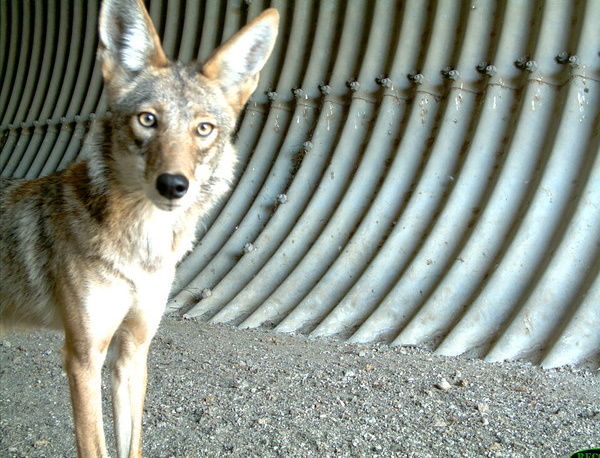Coyotes aren’t just wily, they’re surprisingly diverse canids with 19 subspecies distributed from the north shore of Alaska down to the Panama Canal.
Plains Coyote
The Plains Coyote (Canis latrans latrans) can be found from the southern Canadian prairies down through the American Great Plains to the Texas panhandle. Generally the largest of the coyote subspecies, the Plains Coyote has a lighter paler coat and larger teeth compared to its more eastern relatives. (images via Franco Folini and Santa Monica Mountains National Recreation Area)
Mearns’ Coyote
The official name might be unfamiliar but no doubt you’ve seen Mearns’ Coyote (Canis latrans mearnsi) before… well, kind of. This canid’s home range includes the entire state of Arizona and as such, it can be considered to be the model for Wile E. Coyote, the Acme-products-ordering, Road Runner-chasing, self-described “Genius” from those classic Looney Toons shorts. As a desert dweller, Mearns’ Coyote is smaller than most coyotes with smaller teeth and a more delicate skull. As well, its coat shows more variation in color with the legs in particular displaying tawny yellow fur. (image via Tolka Rover)
California Valley Coyote
The California Valley Coyote (Canis latrans ochropus) is native to a broad strip of Pacific Ocean coastline ranging east into the San Joaquin Valley. In fact, this subspecies is also known as the San Joaquin Valley Coyote. It differs from neighboring subspecies such as the Mountain Coyote in having a coarser coat, larger ears, and more reddish fur. California Valley Coyotes have become more urbanized as human habitation in the region continues to expand, and human-coyote encounters – mostly negative for the coyote’s POV – have become much more common in recent years. (image via Mark Gunn)
Do you like Coyote Buttes and cannot lie? Check out Rock The Wave: A Sandstone Sea In Arizona!
